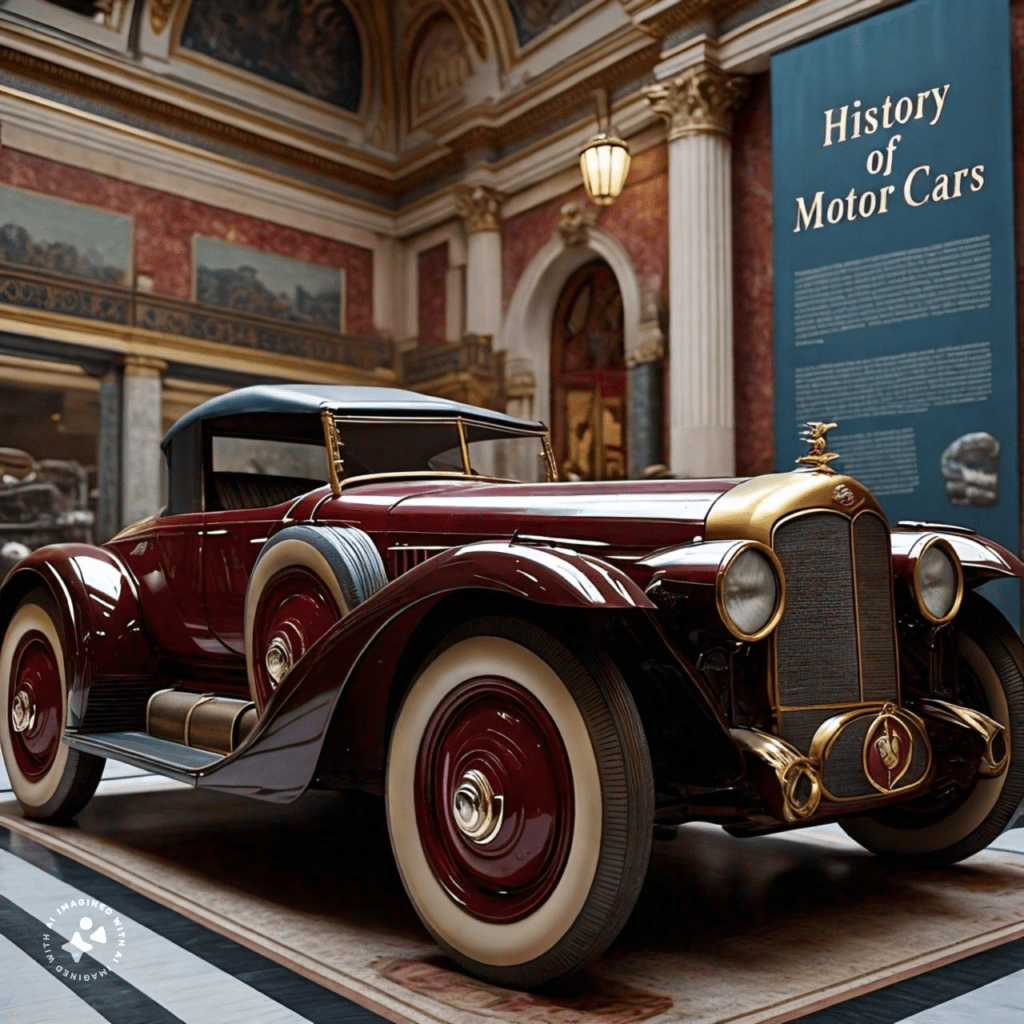

Credit image:
: The motor vehicle, envisioned in the late nineteenth century, changed transportation by using an engine to drive itself. In the long run, it developed from an excess thing to a key technique for transporting billions of people all over the planet.
In the last part of the 1800s, a flash lighted the improvement that would change how we move the motor vehicle. Changing from its modest starting points to the present smooth machines, the excursion of the motor vehicle is an exciting story of development and progress.
“Passing Through Time: A Short History of the Motor Car“
Power sources
The early history of cars focused on looking for a solid, convenient power unit to move the vehicle.
Steam-powered wheeled vehicles
Steam-powered wheeled vehicles, dating back to the late eighteenth century, were early trailblazers of automated transportation. Over time, they paved the way for further advancements in transportation technology.
These vehicles utilized steam motors to drive themselves forward, denoting a huge jump in innovation. Although lumbering and slow by today’s standards, they laid the foundation for the improvement of modern autos.
- 17th and 18th centuries
In the 17th and 18th centuries,steam-fueled wheeled vehicles were exploratory wonders, starting interest and advancement. Albeit crude by current guidelines, they laid the basis for the eventual fate of automated transportation.
- 19th century
In the 19th century, steam-fueled wheeled vehicles turned out to be more refined, denoting the beginning of automated transportation. Consequently, they paved the way for the advancement of railroads and, ultimately, the modern vehicle.
- 20th century
In the 20th century, steam-powered wheeled vehicles steadily transitioned away from gas-powered motors and acquired strength. However, their heritage persevered, impacting early auto designs and contributing to the advancement of transportation technology.
Electric automobiles
Electric vehicles will be vehicles filled with electric motors, including battery-fueled batteries for energy. Therefore, with zero tailpipe discharges, they offer a spotless and manageable option in contrast to regular ignition motor vehicles.
- 19th century
In the 19th century, electric cars arose as a promising development, alongside steam and gas-powered motors. Despite being limited by battery technology, they gained popularity for their quiet operation and absence of emissions, especially in urban areas.
- 20th century
In the 20th century, electric cars confronted rivalry with internal combustion engine vehicles yet experienced discontinuous recoveries. Despite that, improvements in battery innovation and ecological worries prompted reestablished interest in electric vehicles, preparing for present-day electric vehicle headways.
- 21st century
In the 21st century, electric vehicles have flooded in ubiquity because of headways in battery innovation and developing ecological mindfulness. Thus, state-run legislatures overall are supporting their reception to battle environmental change, making electric vehicles an undeniably normal sight on the streets.
Internal combustion engines
Gas-powered motors are the core of most vehicles, driving them by consuming fuel inside chambers. Consequently, they changed transportation in the late nineteenth century, offering greater speed and flexibility than steam engines.
- Gas mixtures
Gas-powered motors depend on exact gas combinations of fuel and air for ignition inside chambers. Subsequently, this blend ignites, producing power that moves vehicles forward, making it a critical process in car design.
- Gasoline
Internal combustion engines normally use gas as their fuel source, lighting it to produce energy for controlling vehicles. Thus, gas’ high energy thickness and accessibility have made it an essential fuel decision for vehicles, trucks, and different vehicles around the world.
Eras of invention
1. Horseless carriage or veteran-era
“The horseless carriage, also known as the veteran-time vehicle, marked the beginning of car development in the late nineteenth and twentieth centuries. Consequently, these crude vehicles, often powered by steam or early gas-powered motors, paved the way for the modern auto industry.”
2. Brass/Edwardian era
The Metal/Edwardian time alludes to the period, for the most part from 1900 to 1914, described by the far and wide utilization of metal in vehicle development. Thus, it was a period of fast mechanical headway and extravagance in vehicle configuration, denoting the progress from early horseless carriages to additional refined vehicles.
3. Vintage era
The Exemplary time frame, spreading from around 1919 to 1930, denoted a time of style and refinement in vehicle design. Thus, vehicles from this time are valued for their craftsmanship, particular styling, and verifiable importance.
4. Pre-war era
The pre-war time frame, happening before the subsequent extraordinary conflict, was a time of fast development and extension in the vehicle business. Thus, vehicles from this period are esteemed for their exemplary plans and verifiable importance, mirroring the social and innovative trends of the time.
5. Postwar era
The postbellum period, following the subsequent extraordinary conflict, saw a flood in vehicle creation and mechanical progression. Thus, it denoted the start of efficiently manufactured vehicles intended for a developing buyer market, molding the cutting-edge auto scene.
6. Modern era
The cutting-edge time represents the ongoing period of car development, characterized by cutting-edge technology and sustainability efforts. Consequently, electric vehicles, autonomous driving features, and connectivity define this period, reshaping the future of transportation.
Conclusion
With everything taken into account, the verifiable background of the motor vehicle is a journey separated by innovativeness, progress, and social change.
Subsequently, from the early steam-controlled vehicles of the nineteenth century to the cutting-edge electric vehicles of today, every time has added to forming how we move and cooperate with our environmental factors.
As we continue, the development of the vehicle remains a demonstration of the human creative mind and the drive for advancement.

